immune support
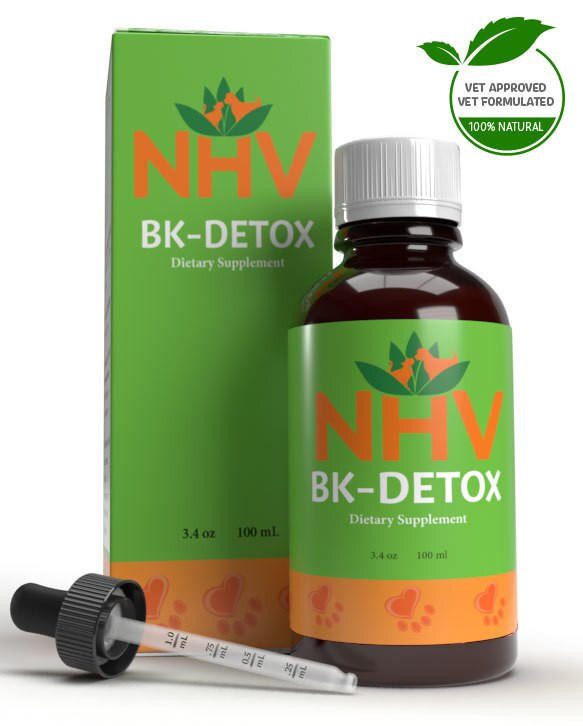
free shipping over $100 (USA & Canada)
1-877-937-4372 the pet expert hotline
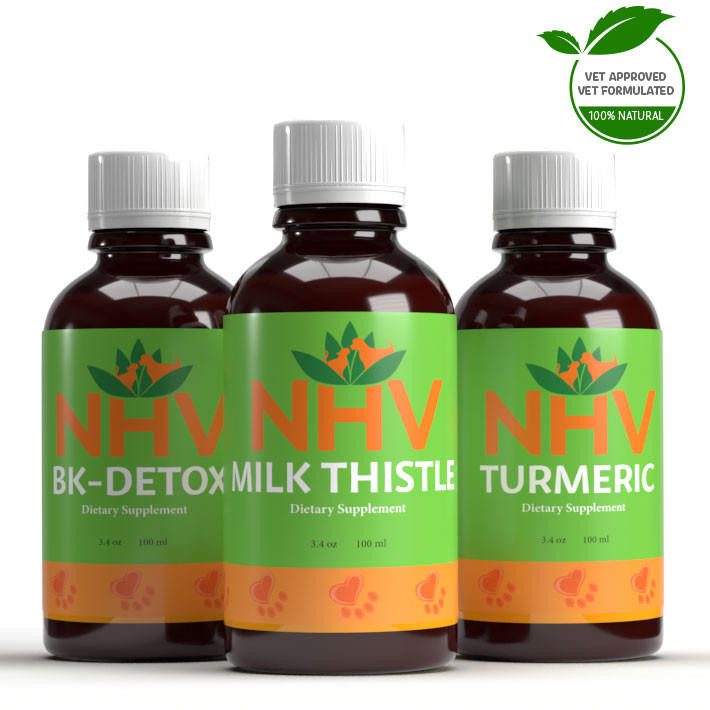

Dealing with bleeding disorders like hemophilia in dogs can be worrisome, as it can lead to uncontrolled bleeding, internal hemorrhage, blood loss anemia, and can be fatal if left untreated. But don’t let the worst-case scenario overwhelm you.
Like nature’s own band-aid, coagulation is crucial to sealing your dog’s wound and for healing to take place.
With this comprehensive guide, we want to clearly break down the basics of blood conditions, covering causes, symptoms, diagnosis, and natural treatments for added support. No need to bust out a medical dictionary! We want you to understand what can be done to keep your little one’s tail wagging and the coagulation process working its magic.
But what exactly is the coagulation process? When your little one gets a wound, coagulation takes place to transform the blood from a free-flowing liquid into a thickened gel-like state called a clot. Like nature’s own band-aid, this process is crucial to sealing the wound and for healing to take place. On the other hand, an issue in this process can cause much harm.
Of the many bleeding disorders a dog can face, hemophilia is the most prevalent concern. This genetic blood clotting disorder comes in two types in dogs – Hemophilia A and Hemophilia B. Both involve a shortage of clotting factors in the blood that can lead to spontaneous bleeding that often occurs in joints and soft tissues.
Understanding the origins of hemophilia involves exploring both genetic and environmental factors. Breeding practices can unintentionally pass on genetic traits that contribute to the deficiency in clotting factors that characterize hemophilia in pets. That is why dogs like German Shepherds, Dobermans, and Golden Retrievers have higher instances of this blood disorder.
Environmental factors can also influence the manifestation of hemophilia in pets. Exposure to toxins, certain medications, or infections during a pet’s early development may contribute to the onset of hemophilia or exacerbate existing genetic predispositions.
Recognizing the signs of Hemophilia A and Hemophilia B in pets is key for early detection and effective management. To spot this bleeding disorder early, look for the following symptoms:
If you notice any of these signs, reach out to your trusted veterinarian immediately. Here are some of the diagnostic tests that can be used to help identify hemophilia in dogs:
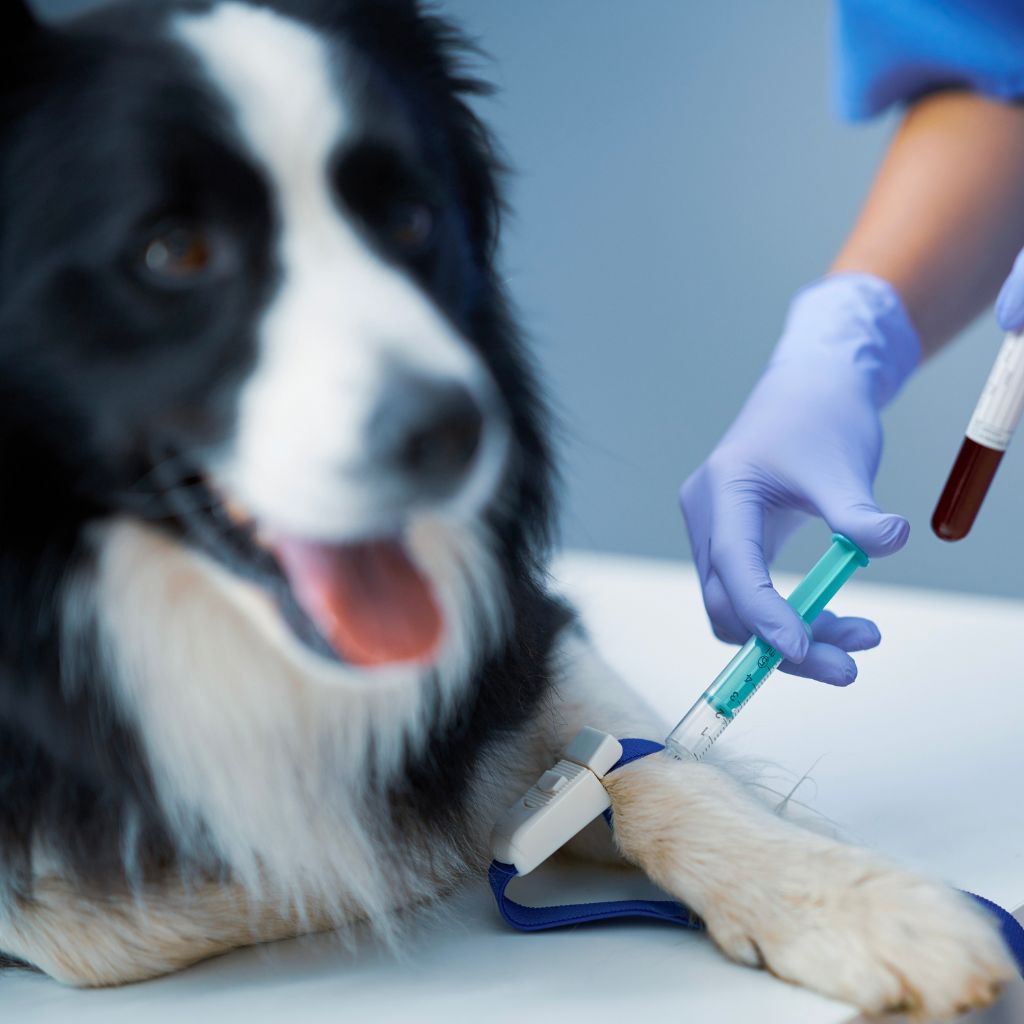
Please follow your veterinarian’s recommendations for hemophilia care in your little one. Many treatment options are available, from clotting factor replacement therapy to prescribed medication. Lifestyle changes, including a balanced diet, exercise, stress management, and natural supplementation, can also go a long way for a healthy, happy pet with hemophilia.
We recommend introducing supplements like the ones in our Blood Disorders Super Support Kit for natural hemophilia support. While not a direct cure, these three formulas will contribute to overall health and may help manage secondary complications. Here’s how each of the supplements can complement conventional veterinary care:
Always involve your veterinarian in any decisions regarding your little one’s health.
In conclusion, while dealing with bleeding disorders like hemophilia in dogs can be concerning, this guide aims to simplify the complexities. Early diagnosis is vital, and we’re here to help you through it. Follow your veterinarian’s treatment recommendations, and contact us if you have any questions about natural support.
immune support

Detoxifies the Blood and Organs, Boosts (support) the Immune System
buy 2 and save $3
3 month supply for a small to medium size pet.
A dog immune support supplement that helps with compromised immune systems that may be fighting cancer, skin problems or heartworms.

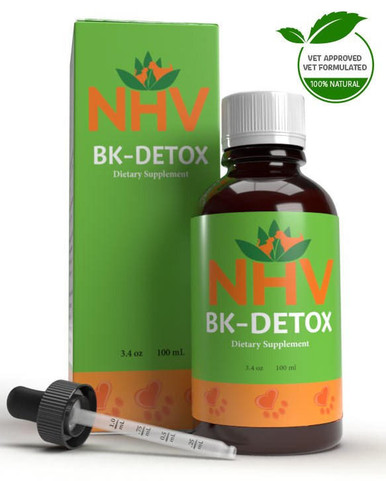
A dog immune support supplement that helps with compromised immune systems that may be fighting cancer, skin problems or heartworms.

Dogs live in a world full of pollutants that they breathe, ingest, and play in every day. Protect them with BK Detox, an all-natural dog immune system (support) booster and detoxifier specially formulated to restore balance, regulate the immune system, and help your pet live a healthier, happier life.
What many people think of as boosting the immune system is actually balancing the immune system. A balanced immune response is the healthiest for helping your pet’s body detect and respond to toxins and infections.
Your dog’s body filters blood impurities through the liver and other vital organs of a dog’s body and then supplies nutrients and oxygen to the cells and tissue, which plays an important role in keeping your dog healthy. BK Detox dog immune system support and detoxifier will help flush toxins out of your pet’s blood and vital organs. When the immune system is compromised, toxins can accumulate in your dog and cause problems including liver disorders, urinary tract infections, skin allergies, tumors, bad breath, and respiratory issues.
Red Clover – A blood-purifying herb with antibiotic and anti-inflammatory properties. It promotes cleansing and the elimination of toxins and deposits through diuretic and expectorant activity.
Cleavers – A tonic that increases the circulation of lymph-impaired areas of the body and aids in the drainage of lymph-engorged cysts, tumors, and inflamed tissues of the urinary tract.
Neem – Has powerful blood purifying and detoxifying effects.
Oregon Grape – Supports and improves digestion by helping rid the body of waste and toxins in the blood.
Gotu Kola – Known for its cleansing, diuretic, and strong antioxidant properties.
Buckthorn – A gentle laxative and blood-cleansing tonic.
Burdock – A highly effective blood purifier abundant in calcium, phosphorus, iron, thiamine, and riboflavin. Supports the entire body while gently eliminating toxic build-up.
Sarsaparilla – A cleansing herb that stimulates the kidneys to flush deposits and clear toxins.
Echinacea Angustifolia – Boosts a dog’s immune system and stimulates the body’s defense mechanism.
Chaparral – A blood purifying antioxidant-rich in amino acids.
Prickly Ash – A tonic that stimulates the entire lymphatic system to encourage the elimination of toxic metabolites.
Select your pet's weight to determine the correct dose.
Bk Detox can be used as a detoxifier every 6 months. For best results administer the recommended dosage until the bottle is finished.
To be taken twice daily. Determine your pet’s weight and then use the easy chart below to determine the correct dose. This is the minimum dosage.
Pet's Weight Dosage
0 - 15 lb = 0.5 ml
16 - 30 lb = 1.0 ml
31 - 45 lb = 1.5 ml
46 - 60 lb = 2.0 ml
61 - 75 lb = 2.5 ml
Over 75 lb = 3.0 ml
For small animals (rabbits, ferrets), avians and reptiles use 1 drop for every 2 lb of body weight.
How to Administer: Shake well before use. The easiest method is to use the dropper provided and place the drops into your pet’s food or favorite treat. You can also use the dropper and squirt directly into the pet’s mouth. Some pets can be finicky, if this occurs consider hiding the drops in foods most pet’s love such as fish, chicken, yogurt, or a favorite treat. If your pet only eats dry food then soak a few kibbles at feeding time.
For Best Results
Herbal dietary supplements are beneficial to the health and well-being of your pet and are safe for long-term use. Every pet responds to natural herbal supplements differently, therefore it is important to be consistent and administer the product daily. Supplements generally take two to four weeks to take effect, however this will vary from one animal to the next.
Product Storage
All NHV Natural Pet Products are pure herbal extracts and contain no artificial additives, preservatives, or coloring. Shelf life after opening is 6 months and must be refrigerated after opening.
Cautions and Contraindications
Do not use BK Detox in pregnant or nursing animals.
Speak to your vet before using our products. A second visit is recommended if your pet’s condition does not improve, or deteriorates after continued use of the supplements.
All information provided by NHV Natural Pet Products is for educational purposes only.
Dogs live in a world full of pollutants that they breathe, ingest, and play in every day. Protect them with BK Detox, an all-natural dog immune system (support) booster and detoxifier specially formulated to restore balance, regulate the immune system, and help your pet live a healthier, happier life.
What many people think of as boosting the immune system is actually balancing the immune system. A balanced immune response is the healthiest for helping your pet’s body detect and respond to toxins and infections.
Your dog’s body filters blood impurities through the liver and other vital organs of a dog’s body and then supplies nutrients and oxygen to the cells and tissue, which plays an important role in keeping your dog healthy. BK Detox dog immune system support and detoxifier will help flush toxins out of your pet’s blood and vital organs. When the immune system is compromised, toxins can accumulate in your dog and cause problems including liver disorders, urinary tract infections, skin allergies, tumors, bad breath, and respiratory issues.
Red Clover – A blood-purifying herb with antibiotic and anti-inflammatory properties. It promotes cleansing and the elimination of toxins and deposits through diuretic and expectorant activity.
Cleavers – A tonic that increases the circulation of lymph-impaired areas of the body and aids in the drainage of lymph-engorged cysts, tumors, and inflamed tissues of the urinary tract.
Neem – Has powerful blood purifying and detoxifying effects.
Oregon Grape – Supports and improves digestion by helping rid the body of waste and toxins in the blood.
Gotu Kola – Known for its cleansing, diuretic, and strong antioxidant properties.
Buckthorn – A gentle laxative and blood-cleansing tonic.
Burdock – A highly effective blood purifier abundant in calcium, phosphorus, iron, thiamine, and riboflavin. Supports the entire body while gently eliminating toxic build-up.
Sarsaparilla – A cleansing herb that stimulates the kidneys to flush deposits and clear toxins.
Echinacea Angustifolia – Boosts a dog’s immune system and stimulates the body’s defense mechanism.
Chaparral – A blood purifying antioxidant-rich in amino acids.
Prickly Ash – A tonic that stimulates the entire lymphatic system to encourage the elimination of toxic metabolites.
Select your pet's weight to determine the correct dose.
Bk Detox can be used as a detoxifier every 6 months. For best results administer the recommended dosage until the bottle is finished.
To be taken twice daily. Determine your pet’s weight and then use the easy chart below to determine the correct dose. This is the minimum dosage.
Pet's Weight Dosage
0 - 15 lb = 0.5 ml
16 - 30 lb = 1.0 ml
31 - 45 lb = 1.5 ml
46 - 60 lb = 2.0 ml
61 - 75 lb = 2.5 ml
Over 75 lb = 3.0 ml
For small animals (rabbits, ferrets), avians and reptiles use 1 drop for every 2 lb of body weight.
How to Administer: Shake well before use. The easiest method is to use the dropper provided and place the drops into your pet’s food or favorite treat. You can also use the dropper and squirt directly into the pet’s mouth. Some pets can be finicky, if this occurs consider hiding the drops in foods most pet’s love such as fish, chicken, yogurt, or a favorite treat. If your pet only eats dry food then soak a few kibbles at feeding time.
For Best Results
Herbal dietary supplements are beneficial to the health and well-being of your pet and are safe for long-term use. Every pet responds to natural herbal supplements differently, therefore it is important to be consistent and administer the product daily. Supplements generally take two to four weeks to take effect, however this will vary from one animal to the next.
Product Storage
All NHV Natural Pet Products are pure herbal extracts and contain no artificial additives, preservatives, or coloring. Shelf life after opening is 6 months and must be refrigerated after opening.
Cautions and Contraindications
Do not use BK Detox in pregnant or nursing animals.
Speak to your vet before using our products. A second visit is recommended if your pet’s condition does not improve, or deteriorates after continued use of the supplements.
All information provided by NHV Natural Pet Products is for educational purposes only.
general wellbeing
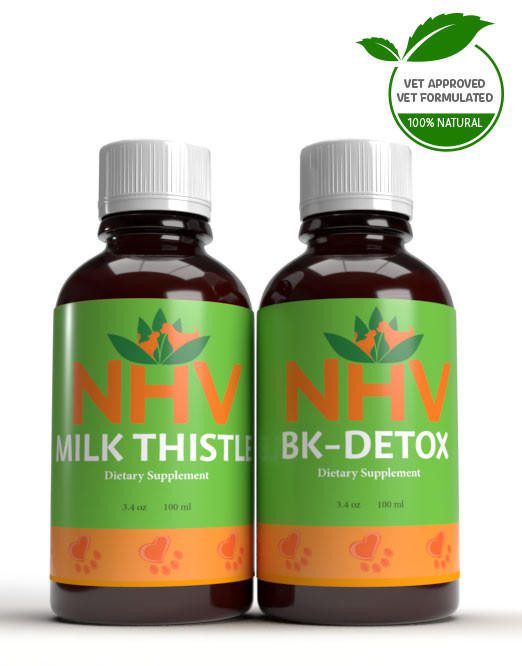
Milk Thistle & BK Detox
bundle and save with pet expert kits
3 month supply for a small to medium size pet.
Whether your pet is recovering from ingestion of a toxin, is recovering from surgery or has been on a regimen of medications, the supplements in the Detoxification Kit can help to flush toxins from the system by helping to support the liver and immune system.


Whether your pet is recovering from ingestion of a toxin, is recovering from surgery or has been on a regimen of medications, the supplements in the Detoxification Kit can help to flush toxins from the system by helping to support the liver and immune system.

To be taken twice daily. Determine your pet’s weight and then use the easy chart below to determine the correct dose. This is the minimum dosage.
Pet's Weight Dosage
0 - 15 lb = 0.5 ml
16 - 30 lb = 1.0 ml
31 - 45 lb = 1.5 ml
46 - 60 lb = 2.0 ml
61 - 75 lb = 2.5 ml
Over 75 lb = 3.0 ml
How to Administer
Shake well before use. The easiest method is to use the dropper provided and place the drops into your pet’s food or favorite treat. You can also use the dropper and squirt directly into the pet’s mouth. Some pets can be finicky, if this occurs consider hiding the drops in foods most pet’s love such as fish, chicken or yogurt or a favorite treat. If your pet only eats dry food then soak a few kibbles at feeding time.
For Best Results
Herbal dietary supplements are beneficial to the health and well-being of your pet and are safe for long-term use. Every pet responds to natural herbal supplements differently, therefore it is important to be consistent and administer the product daily. Supplements generally take two to four weeks to take effect, however this will vary from one animal to the next.
Product Storage
All NHV Natural Pet Products are pure herbal extracts and contain no artificial additives, preservatives or coloring. Shelf life after opening is 6 months and must be refrigerated after opening.
All information provided by NHV Natural Pet Products is for educational purposes only.
Select your pet's weight to determine the correct dose.
It's not a bad idea, however it isn't necessary. Good nutrition is super important for your pet. So long as your feeding a high quality diet, your cat or dog will be just fine.
After long term medications, or if you're about any toxicity in your pet's body. Note that this is a support and should be used as after vet care. It doesn't replace emergency care. The herbal detoxification kit for pets can also be used if your pet is suffering from conditions like cancer or liver disease.
BK detox for pets isn't your traditional detox. It helps cleanse the body, but it's very gentle. Your cat or dog can stay on it for a long time without worry. And Milk Thistle is actually super supportive of the liver. It helps your pet's liver, so their body's can do the work of detoxification.
First, rush your pet to the vet. Follow their advice strictly. Once back from the vet, you can help support your pet to get them back to optimal health. Using the detoxification remedy is a good support for after emergency care.
To be taken twice daily. Determine your pet’s weight and then use the easy chart below to determine the correct dose. This is the minimum dosage.
Pet's Weight Dosage
0 - 15 lb = 0.5 ml
16 - 30 lb = 1.0 ml
31 - 45 lb = 1.5 ml
46 - 60 lb = 2.0 ml
61 - 75 lb = 2.5 ml
Over 75 lb = 3.0 ml
How to Administer
Shake well before use. The easiest method is to use the dropper provided and place the drops into your pet’s food or favorite treat. You can also use the dropper and squirt directly into the pet’s mouth. Some pets can be finicky, if this occurs consider hiding the drops in foods most pet’s love such as fish, chicken or yogurt or a favorite treat. If your pet only eats dry food then soak a few kibbles at feeding time.
For Best Results
Herbal dietary supplements are beneficial to the health and well-being of your pet and are safe for long-term use. Every pet responds to natural herbal supplements differently, therefore it is important to be consistent and administer the product daily. Supplements generally take two to four weeks to take effect, however this will vary from one animal to the next.
Product Storage
All NHV Natural Pet Products are pure herbal extracts and contain no artificial additives, preservatives or coloring. Shelf life after opening is 6 months and must be refrigerated after opening.
All information provided by NHV Natural Pet Products is for educational purposes only.
Select your pet's weight to determine the correct dose.
It's not a bad idea, however it isn't necessary. Good nutrition is super important for your pet. So long as your feeding a high quality diet, your cat or dog will be just fine.
After long term medications, or if you're about any toxicity in your pet's body. Note that this is a support and should be used as after vet care. It doesn't replace emergency care. The herbal detoxification kit for pets can also be used if your pet is suffering from conditions like cancer or liver disease.
BK detox for pets isn't your traditional detox. It helps cleanse the body, but it's very gentle. Your cat or dog can stay on it for a long time without worry. And Milk Thistle is actually super supportive of the liver. It helps your pet's liver, so their body's can do the work of detoxification.
First, rush your pet to the vet. Follow their advice strictly. Once back from the vet, you can help support your pet to get them back to optimal health. Using the detoxification remedy is a good support for after emergency care.
arthritis support
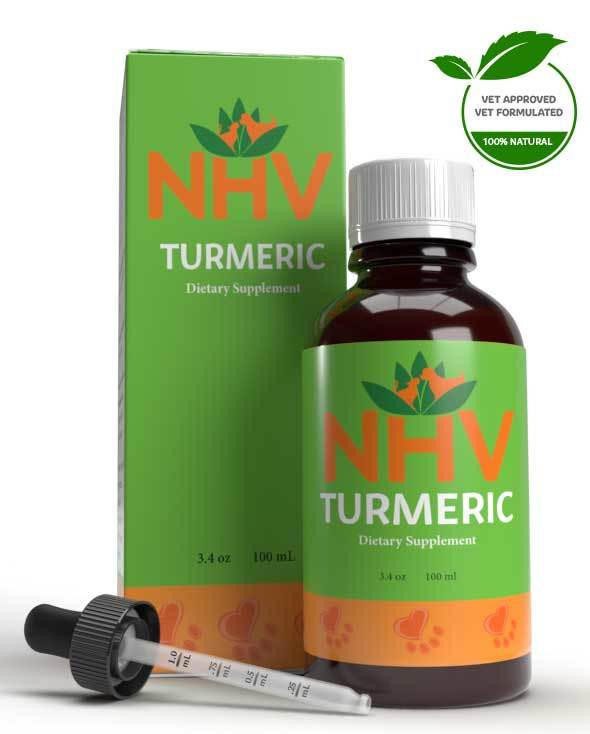
Supports the general well-being of your canine companion
buy 2 and save $3
3 month supply for a small to medium size
Use turmeric for dogs with cancer, arthritis, digestive disorders, and more as a supporting supplement.

Use turmeric for dogs with cancer, arthritis, digestive disorders, and more as a supporting supplement.
All pet parents want their beloved canines to be healthy, and with the tremendous health benefits of turmeric, your dog will be barking for joy in no time. This herb is also used as a spice, and is considered to be a superfood.
The active compound in turmeric is curcumin, which may be beneficial for dogs suffering from the following health issues:
Pet parents who found relief for their canine with NHV’s Turmeric for Dogs also found Milk Thistle and Old Timer supplements to be beneficial.
You can read the story of Captain Morgan, the dog who thinks turmeric is the spice of life after dealing with extreme inflammatory issues.
Epidemiological studies have linked frequent use of turmeric to lower rates of mammary, lung, liver, and colon cancers, and can even help prevent tumors from forming.
At NHV, we offer a vast array of natural support for your pet’s health and wellbeing. If you are unsure of holistic supplements or have questions about them, ask an NHV expert because our primary goal is to help your pet achieve health and vitality naturally.
The active compound in turmeric is curcumin. Studies have shown turmeric to be an excellent anti-inflammatory, antioxidant, anti-fungal, antibacterial, anticoagulant, antiseptic, astringent, helps with liver function, bile production and externally for wound healing.
Turmeric for cats is beneficial for arthritic conditions due to the anti-inflammatory properties and is COX2 inhibitors.
You can use turmeric for your cat as a cancer support due to its antioxidant properties.
Use of turmeric extracts in a pets daily diet may help scavenge free radicals, increase antioxidant enzymes, and inhibit lipid peroxidation.
The healing properties of curcumin may also be beneficial for cats with autoimmune diseases, liver disorders ( increases detoxification of the liver) and heart and circulatory support. Turmeric for cats may help lower the bad cholesterol (LDL), and also helps reduce the risk of blood clotting.
Black pepper is well known for cooking, but it comes with a host of beneficial medicinal properties for your cat. Black pepper itself also has anti-inflammatory, antioxidant, and anti-bacterial. It helps to promote digestion, and studies show that it helps protect against oxidative damage by inhibiting free radicals.
Select your pet's weight to determine the correct dose.
To be taken twice daily. Determine your pet’s weight and then use the easy chart below to determine the correct dose. This is the minimum dosage.
Pet's Weight Dosage
0 - 15 lb = 0.5 ml
16 - 30 lb = 1.0 ml
31 - 45 lb = 1.5 ml
46 - 60 lb = 2.0 ml
61 - 75 lb = 2.5 ml
Over 75 lb = 3.0 ml
How to Administer
Shake well before use. The easiest method is to use the dropper provide and places the drops into your pet’s food or favorite treat. You can also use the dropper and squirt directly into the pet’s mouth.
Some pets can be finicky, if this occurs consider hiding the drops in foods most pet’s love such as fish, chicken or yogurt or a favorite treat. If your pet only eats dry food then soak a few kibbles at feeding time.
For Best Results
Herbal dietary supplements are beneficial to the health and wellbeing of your pet and are safe for long-term use. Every pet responds to natural herbal supplements differently, therefore it is important to be consistent and administer the product daily. Supplements generally take two to four weeks to take effect, however this will vary from one animal to the next.
Product Storage
All NHV Natural Pet Products are pure herbal extracts and contain no artificial additives, preservatives or coloring. Shelf life after opening is 6 months and must be refrigerated after opening.
Cautions and Contraindications: Do not use Turmeric in pregnant or nursing animals. Speak to your vet before using our products. A second visit is recommended if your pet’s condition does not improve, or deteriorates after continued use of the supplements.
All pet parents want their beloved canines to be healthy, and with the tremendous health benefits of turmeric, your dog will be barking for joy in no time. This herb is also used as a spice, and is considered to be a superfood.
The active compound in turmeric is curcumin, which may be beneficial for dogs suffering from the following health issues:
Pet parents who found relief for their canine with NHV’s Turmeric for Dogs also found Milk Thistle and Old Timer supplements to be beneficial.
You can read the story of Captain Morgan, the dog who thinks turmeric is the spice of life after dealing with extreme inflammatory issues.
Epidemiological studies have linked frequent use of turmeric to lower rates of mammary, lung, liver, and colon cancers, and can even help prevent tumors from forming.
At NHV, we offer a vast array of natural support for your pet’s health and wellbeing. If you are unsure of holistic supplements or have questions about them, ask an NHV expert because our primary goal is to help your pet achieve health and vitality naturally.
The active compound in turmeric is curcumin. Studies have shown turmeric to be an excellent anti-inflammatory, antioxidant, anti-fungal, antibacterial, anticoagulant, antiseptic, astringent, helps with liver function, bile production and externally for wound healing.
Turmeric for cats is beneficial for arthritic conditions due to the anti-inflammatory properties and is COX2 inhibitors.
You can use turmeric for your cat as a cancer support due to its antioxidant properties.
Use of turmeric extracts in a pets daily diet may help scavenge free radicals, increase antioxidant enzymes, and inhibit lipid peroxidation.
The healing properties of curcumin may also be beneficial for cats with autoimmune diseases, liver disorders ( increases detoxification of the liver) and heart and circulatory support. Turmeric for cats may help lower the bad cholesterol (LDL), and also helps reduce the risk of blood clotting.
Black pepper is well known for cooking, but it comes with a host of beneficial medicinal properties for your cat. Black pepper itself also has anti-inflammatory, antioxidant, and anti-bacterial. It helps to promote digestion, and studies show that it helps protect against oxidative damage by inhibiting free radicals.
Select your pet's weight to determine the correct dose.
To be taken twice daily. Determine your pet’s weight and then use the easy chart below to determine the correct dose. This is the minimum dosage.
Pet's Weight Dosage
0 - 15 lb = 0.5 ml
16 - 30 lb = 1.0 ml
31 - 45 lb = 1.5 ml
46 - 60 lb = 2.0 ml
61 - 75 lb = 2.5 ml
Over 75 lb = 3.0 ml
How to Administer
Shake well before use. The easiest method is to use the dropper provide and places the drops into your pet’s food or favorite treat. You can also use the dropper and squirt directly into the pet’s mouth.
Some pets can be finicky, if this occurs consider hiding the drops in foods most pet’s love such as fish, chicken or yogurt or a favorite treat. If your pet only eats dry food then soak a few kibbles at feeding time.
For Best Results
Herbal dietary supplements are beneficial to the health and wellbeing of your pet and are safe for long-term use. Every pet responds to natural herbal supplements differently, therefore it is important to be consistent and administer the product daily. Supplements generally take two to four weeks to take effect, however this will vary from one animal to the next.
Product Storage
All NHV Natural Pet Products are pure herbal extracts and contain no artificial additives, preservatives or coloring. Shelf life after opening is 6 months and must be refrigerated after opening.
Cautions and Contraindications: Do not use Turmeric in pregnant or nursing animals. Speak to your vet before using our products. A second visit is recommended if your pet’s condition does not improve, or deteriorates after continued use of the supplements.
Published: January 4, 2024